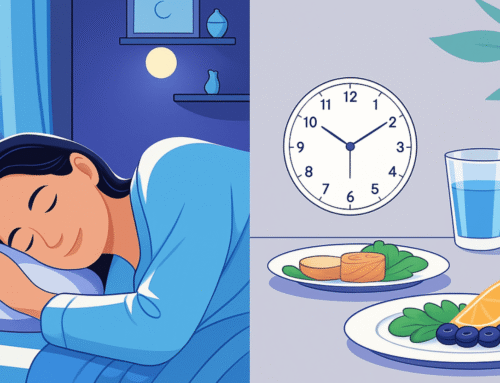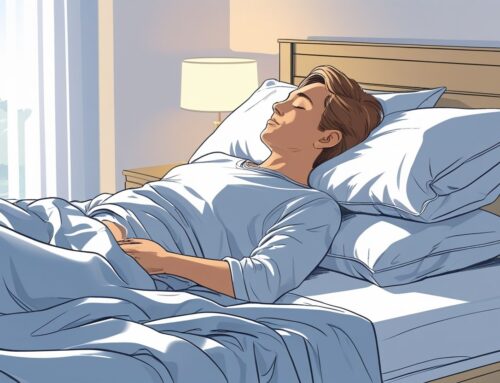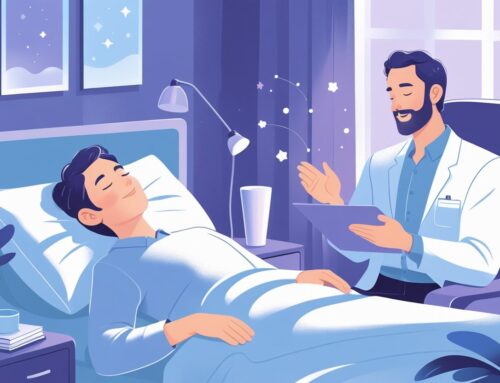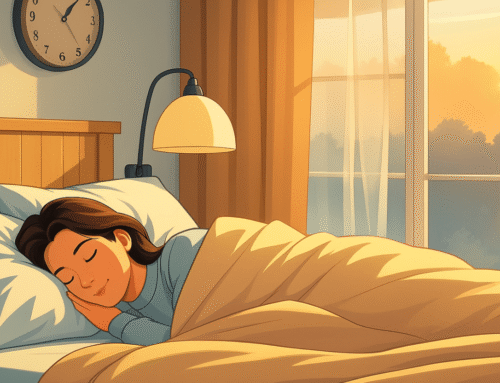Spinal stenosis can cause pain that makes it hard to get comfortable at night. The way you sleep matters because certain positions put less stress on the spine. Lying on your stomach adds strain, so it’s better to sleep on your side with your knees slightly bent or on your back with a pillow under your knees. Both positions keep the spine in a natural or gently curved position.
Getting the right support also helps ease the pain. Using pillows to keep the hips lined up or raising the legs can take pressure off the nerves. A medium-firm mattress or an adjustable bed can hold the spine in place and stop it from bending in ways that cause more discomfort.
Simple changes in sleep posture and support can lead to better rest and less pain over time. Many people notice that with the right position and mattress, they sleep more peacefully and wake up feeling less sore.
Key Takeaways
- Sleeping in positions that reduce spinal pressure improves comfort.
- Supportive pillows and mattresses help keep the spine aligned.
- Avoiding stomach sleeping prevents extra strain on the spine and nerves.
- A medium-firm mattress with balanced support reduces pressure and improves sleep with spinal stenosis.
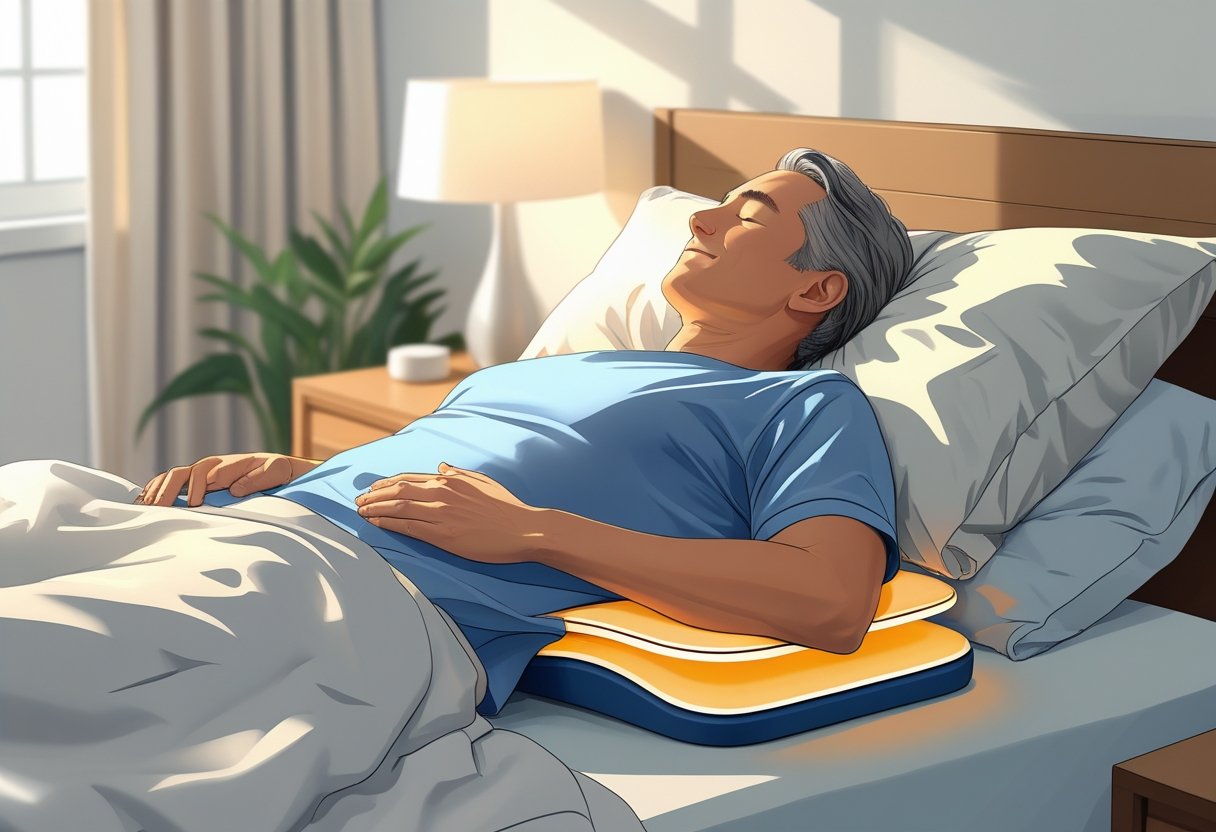
Understanding Spinal Stenosis and Its Impact on Sleep
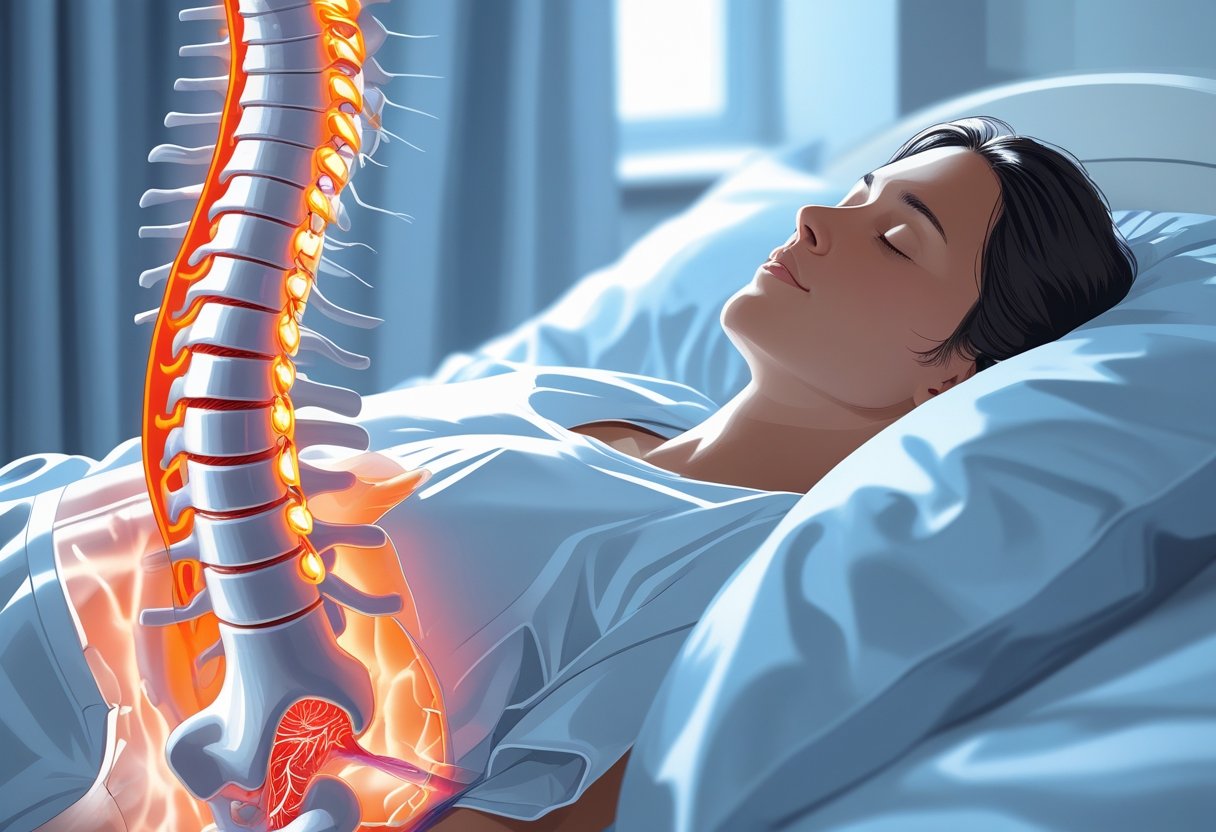
Spinal stenosis happens when the spaces inside the spine get smaller. This puts pressure on the nerves, which causes pain and discomfort. These symptoms can disturb sleep and make rest harder, so it helps to know what the condition is and how it affects daily life.
What Is Spinal Stenosis?
Spinal stenosis occurs when the spinal canal becomes narrow, leaving less room for the spinal cord and nerves. This can happen in different areas of the spine but usually shows up in the lumbar region, or lower back.
The lumbar spine has five vertebrae that connect to the pelvis. When narrowing develops there, it presses on the nerves and causes pain in the lower back and legs. Age, arthritis, herniated discs, or extra bone growth are common causes. Most people who deal with it are older adults, and symptoms can include numbness, weakness, or problems with walking.
How Spinal Stenosis Affects Sleep Quality
Pain from spinal stenosis makes it harder to fall asleep and stay asleep. Pressure on the nerves increases when lying down, so it becomes difficult to find a position that feels comfortable.
Sleeping on the stomach puts more stress on the back and neck, which usually worsens the pain. A supportive mattress helps keep the spine steady and lessens nerve pressure. Using pillows to align the hips, legs, and spine can also reduce discomfort and improve sleep.
Common Symptoms That Disrupt Rest
Spinal stenosis may cause lower back pain, numbness, tingling in the legs, and muscle weakness. These problems can wake someone up during the night or keep them from reaching deep sleep. Leg cramps and sciatica, which is sharp pain spreading down the leg, often flare up at night and force frequent position changes. In more serious cases, the condition may affect bladder or bowel control, which interrupts rest too.
Many people feel relief when sleeping on their back with legs slightly raised, or curled up in a fetal position. Stomach sleeping is usually avoided since it puts more pressure on the spine.
Best Sleeping Positions for Spinal Stenosis
Sleeping in the right position can ease pressure on the spine and nerves, which helps reduce pain from spinal stenosis. Small changes, like adding pillows or adjusting posture, can improve comfort and rest. What matters most is keeping the spine aligned and reducing strain at night.
Side Sleeping With Knees Bent
Lying on your side with bent knees, sometimes called the fetal position, creates space between the vertebrae. This helps take pressure off the nerve roots, which makes it one of the most comfortable sleep positions for spinal stenosis. A pillow between the knees keeps the hips level and stops the lower back from twisting. This also eases tension in the pelvis and lumbar area. A mattress with steady support is important here since it helps you stay balanced while on your side.
This position works well for people with lumbar spinal stenosis because it keeps weight off the lower back and reduces pain caused by nerve compression.
Back Sleeping With Elevated Knees
Lying on your back can help with spinal stenosis if the knees are slightly raised. Placing a pillow or wedge under the legs lowers stress on the lumbar spine and maintains its natural curve. A firm mattress keeps the body from sinking, so the spine doesn’t bend out of place. A pillow shaped to support the neck also keeps the cervical spine straight.
This posture spreads body weight more evenly and eases pressure on spinal nerves, which may relieve lumbar pain. Many people who like back sleeping find this adjustment helps them rest better with spinal stenosis.
Sleeping in a Reclined Position
Sleeping at an angle, whether in an adjustable bed or recliner, raises the upper body and knees at the same time. This position lessens pressure on the spinal canal and reduces nerve compression linked to spinal stenosis. The reclined angle creates more space in the lower spine, which cuts down on pain and discomfort. Keeping the legs slightly lifted also helps circulation and reduces swelling.
This option works well for people who struggle to lie flat or have severe symptoms. It helps the spine rest in a neutral curve and reduces pressure on sensitive areas, which may improve sleep quality.
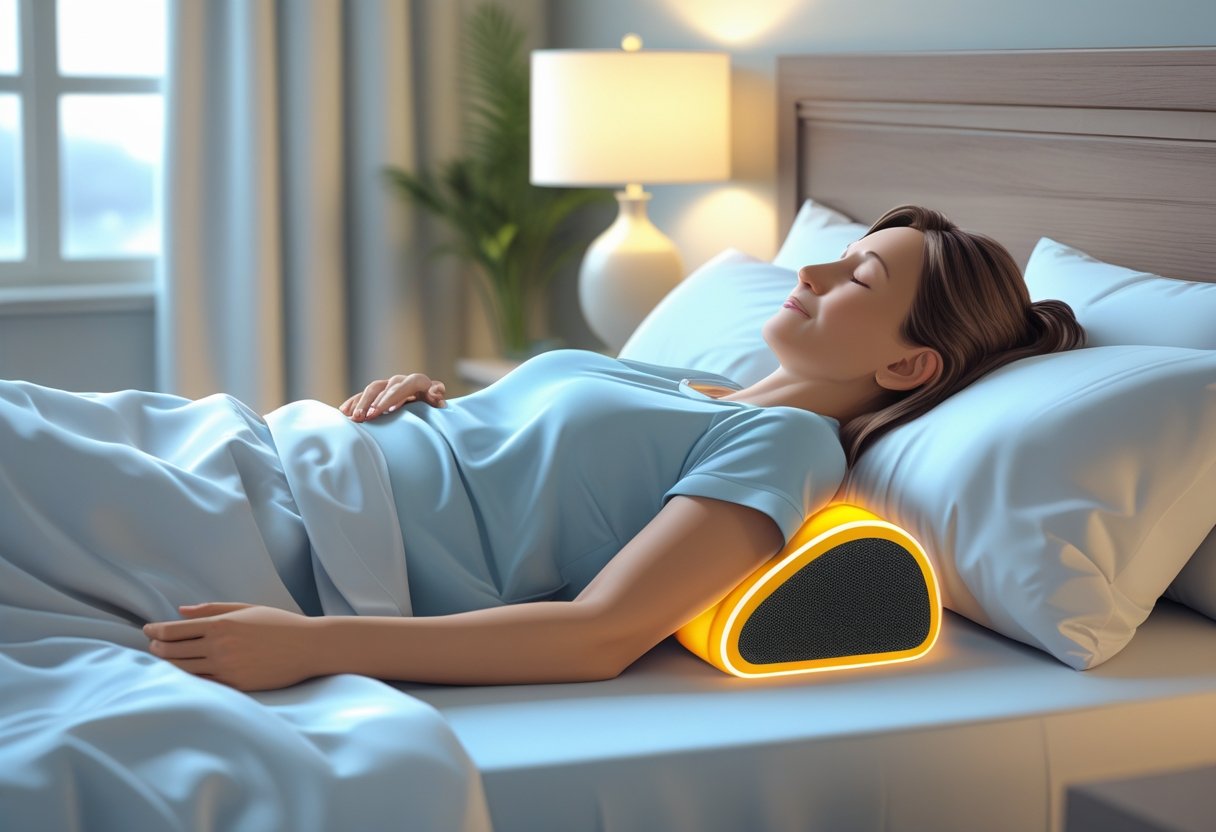
Physical Support: Choosing Mattresses and Pillows
Good support while sleeping helps ease pressure on the spine. A mattress and pillow that keep the spine in line can reduce pain. The firmness of the mattress, the material it’s made of, and how pillows are placed all play a role in keeping the back comfortable.
Selecting the Right Mattress
A medium-firm mattress usually works well for people with spinal stenosis. It supports the spine’s natural shape without feeling too stiff. A mattress that is too soft can cause the body to sink, throwing off alignment and adding to the pain. Poor-quality mattresses don’t give the spine the support it needs. This lack of support can increase nerve pressure, leading to more discomfort. For that reason, it’s better to stay away from mattresses that are either overly soft or rock hard without proper cushioning.
Mattresses made of quality memory foam or latex help keep the spine in a neutral position. Picking one that matches body weight and sleep style improves comfort and eases pressure on sensitive areas.
Benefits of Memory Foam and Adjustable Beds
Memory foam shapes itself to the body, spreads weight evenly, and eases pressure points. This helps with nerve pain linked to spinal stenosis. It also reduces motion transfer, which can improve sleep. Adjustable beds allow people to raise their head and legs, taking strain off the lower back. This slightly opens the spinal canal and helps calm nerve irritation. Positions where the knees are lifted above the hips are especially helpful for lumbar stenosis.
Both memory foam mattresses and adjustable beds create a more supportive setup. They reduce pain, improve alignment, and allow comfort adjustments when symptoms shift during the night.
Using Pillows for Spinal Alignment
Pillows help keep the spine’s natural curves in place while sleeping. A contour memory foam pillow supports the neck’s shape, which helps with cervical stenosis. Side sleepers do well with a firm pillow between their knees to keep hips level and reduce stress on the lower spine.
Back sleepers can ease pressure on the lower back by placing a pillow or wedge under their knees. It’s best to avoid pillows that are too thick or overly soft since they can push the head too high and strain the neck.
The right pillow supports healthy alignment and prevents added pain, making it easier to stay comfortable through the night.
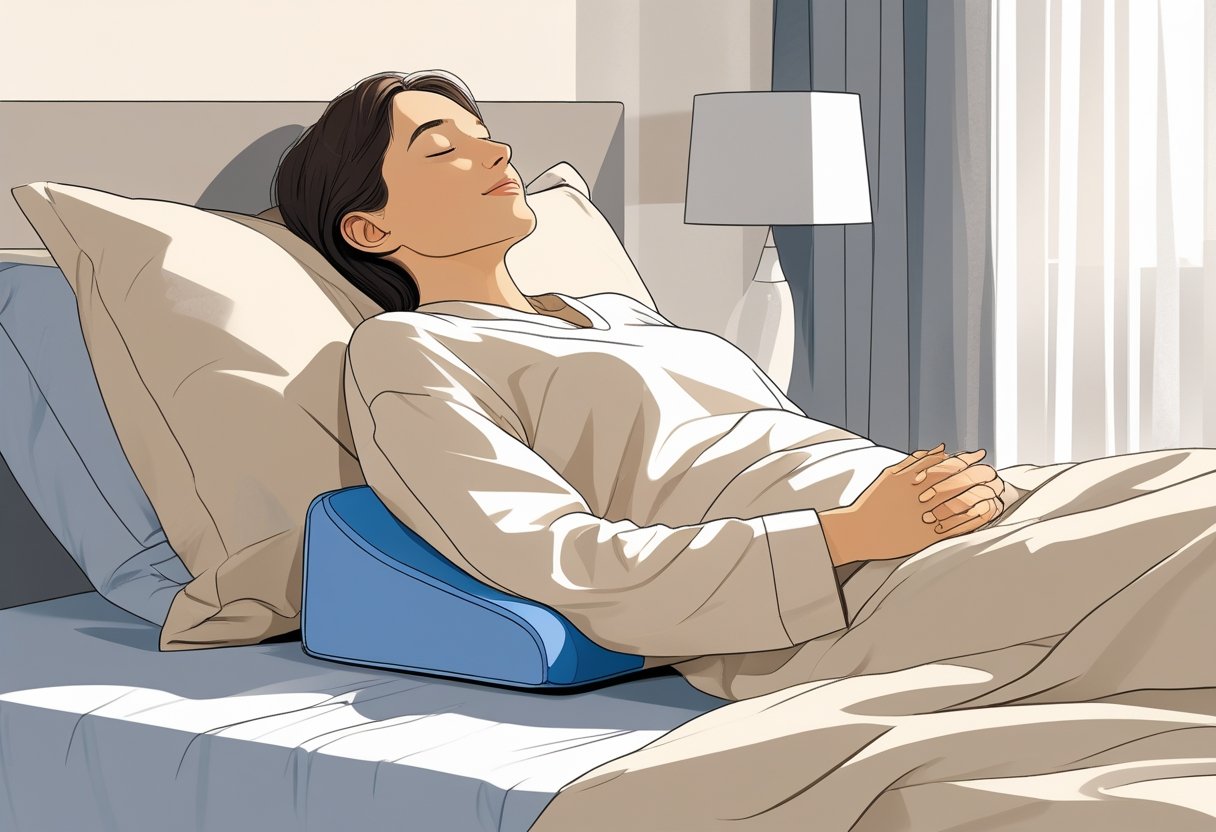
Tips for Sleeping With Different Types of Stenosis
Sleeping well with spinal stenosis means finding positions and support that ease pressure on the nerves. The way you lie down and the kind of pillow you use can help reduce pain and improve comfort through the night.
Lumbar Spinal Stenosis Sleeping Techniques
For lumbar spinal stenosis, lying on your back works best. A firm mattress gives solid support and keeps the spine straight. Placing a pillow under the legs can take pressure off the lower back and bring relief. If sleeping on your back feels uncomfortable, try sleeping on your side. A pillow between the knees keeps the hips and spine lined up. Lying on your stomach should be avoided, since it strains the lower back and can cause more pain.
People with degenerative disc disease use the same methods because both conditions stress the lower back. With the right support, nerve pressure can ease, which helps improve sleep quality.
Cervical Spinal Stenosis Considerations
With cervical spinal stenosis, the focus shifts to the neck and upper spine. A contoured pillow that fills the space between the neck and mattress helps keep the spine in a neutral position. Sleeping on the back or side works well, but avoid curling too tightly on the side since it can strain the neck. Stomach sleeping places extra weight on the neck and usually makes symptoms worse, so it’s better to avoid it.
Raising the head a little with an adjustable bed or wedge pillow can also ease nerve pressure. These small changes help lower pain and bring more comfort at night.
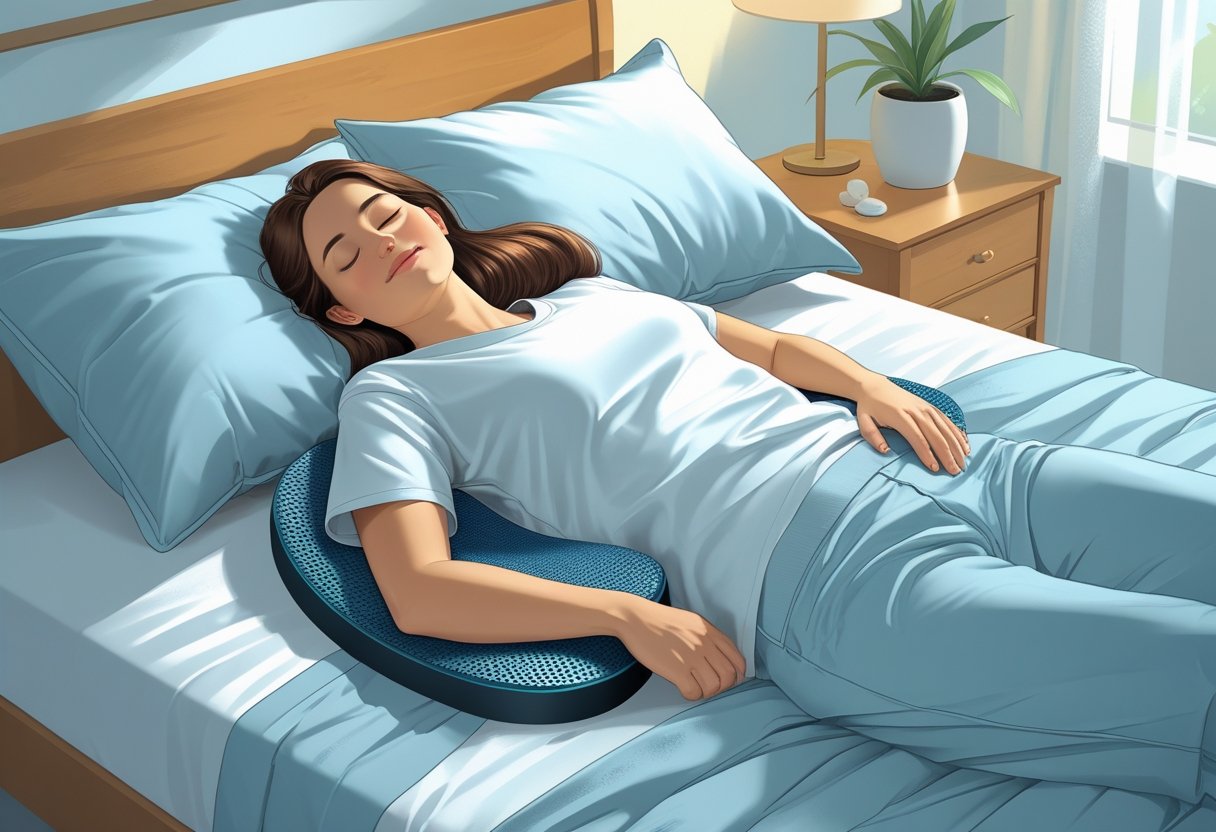
Alternative Strategies for Better Sleep
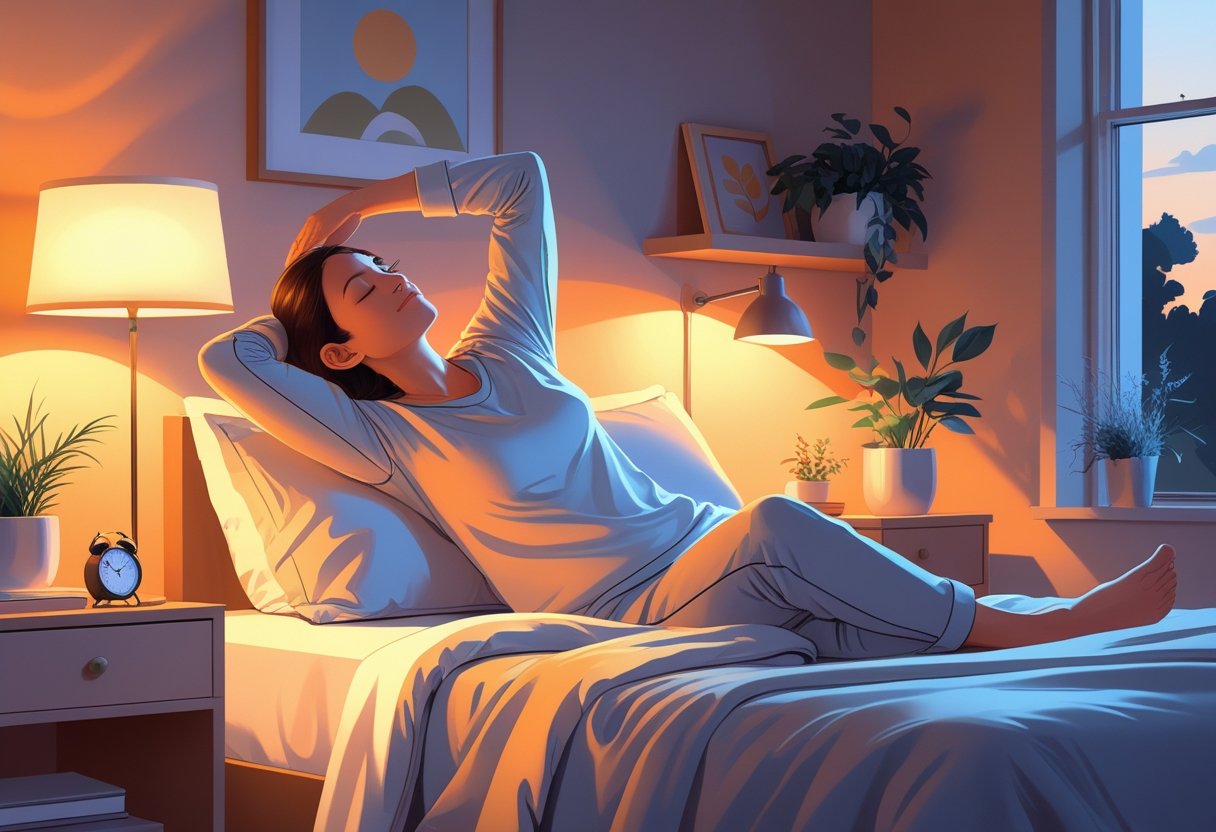
Improving sleep with spinal stenosis takes more than finding a comfortable position. Daily habits, pain relief methods, and the setup of your sleep environment all play a role in lowering discomfort and supporting better rest.
Stretching and Nighttime Routines
Gentle stretching before bed can release tension in the lower back and legs. Simple moves that focus on the hamstrings, hips, and back help reduce stiffness linked to spinal stenosis and degenerative disc disease.
Keeping a routine helps the body know when it’s time to relax. Doing the same stretches each night creates a rhythm that makes falling asleep easier. Avoid sharp or heavy movements, since they can put more pressure on nerves and trigger pain. A warm pack before stretching helps loosen tight muscles and makes stretching easier. Pairing light stretches with deep breathing or relaxation practices also prepares the body for better rest.
Home Remedies and Lifestyle Changes
Changes in daily habits can ease some of the discomfort that comes with spinal stenosis. Staying active and managing weight supports spine health and may reduce pain. Gentle exercises like walking or swimming keep the spine flexible without adding extra strain.
Using hot or cold packs on sore spots helps with swelling and stiffness. Over-the-counter pain relief can also provide comfort, though it’s best to check with a doctor before relying on them regularly. Cutting out caffeine and skipping heavy meals before bed can prevent restless nights. Reducing screen time and creating a calming routine before bed also helps you fall asleep more quickly.
Posture and Sleep Environment Adjustments
The right mattress supports people with spinal stenosis. A firm or medium-firm mattress, especially with memory foam, supports the spine and eases pressure on sensitive areas. Pillows can be used to improve posture while sleeping. Back sleepers may find relief by placing a pillow under the knees, while side sleepers benefit from a pillow between the legs to keep the hips in line.
For some, adjustable beds or recliners that raise the head and knees help reduce nerve pressure. And keeping the bedroom dark, cool, and quiet encourages deeper, more refreshing sleep.
Precautions and Practices to Avoid
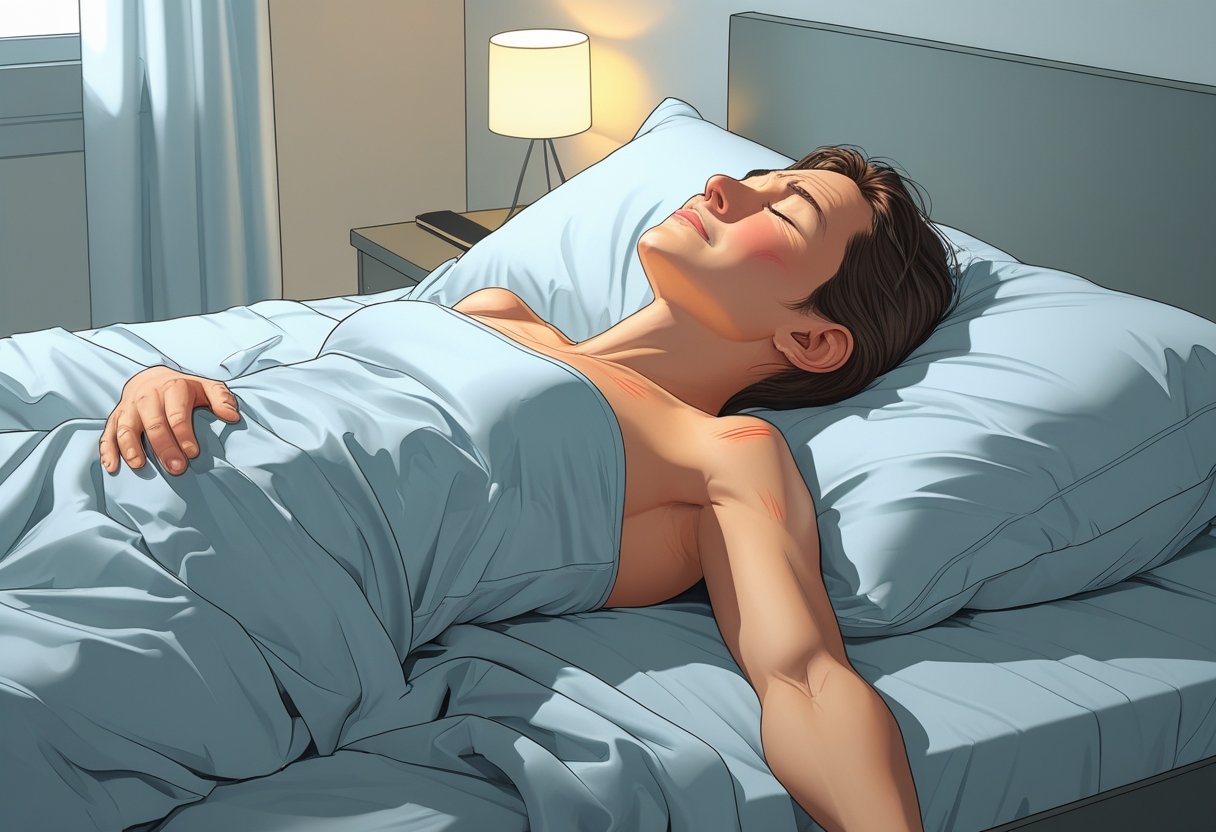
Certain sleeping habits and activities increase pain or worsen symptoms of spinal stenosis. Avoiding these helps protect the spine and improves sleep quality.
Positions That May Worsen Symptoms
Sleeping on the stomach adds strain to the lower back. This position bends the spine into an unnatural curve, which can press on nerves and trigger pain. It also twists the neck to one side, leaving you sore by morning. Side sleeping can be tricky too. Without the right pillow support, the spine may twist or sink out of alignment. This uneven position puts extra stress on the back, shoulders, and hips, which can lead to more discomfort.
A mattress that’s too soft or too firm also works against you. Without steady support, pressure points form and the spine slips out of its neutral position. A medium-firm surface usually helps the back stay balanced through the night.
High-Impact Activities and Sleep Disruptors
Running, jumping, and other high-impact activities push extra pressure onto the spine. This can increase swelling and slow recovery. Switching to lower-impact movement, like walking or swimming, is easier on the back and still keeps the body active.
Using phones or watching TV before bed interferes with the natural sleep cycle. Bright light delays rest and leads to shorter, broken sleep. Poor sleep makes the body more sensitive to pain, which only adds to the problem. Drinking caffeine or eating heavy meals close to bedtime also makes it harder to relax. The body stays unsettled, leaving sleep light and restless. Deep sleep is needed for pain relief, so it helps to avoid these triggers late at night.
When to Seek Medical Advice
If changes in sleep habits don’t ease the pain and rest still feels impossible, it’s time to check in with a doctor. Serious symptoms like numbness, sudden weakness in the legs, or losing control of the bladder or bowels should not be ignored. These may point to nerve damage or a worsening condition that needs urgent care. Doctors can suggest options such as therapy, medication, or in some cases surgery. Getting help early can protect the spine from more damage and improve daily life.
Best Mattress and Sleep Position for Relief from Spinal Stenosis
Finding the right mattress matters when you’re dealing with spinal stenosis. A medium-firm mattress usually gives the right mix of comfort and support. It helps keep the spine in proper alignment while easing pressure on sensitive areas.
The goal is to keep your spine neutral while reducing pressure points. A mattress like the Leesa Studio Chill Hybrid works because it combines cooling materials with supportive layers. The foam and pocketed coils contour to the body while still holding up the spine. The cooling fabric also helps those who tend to sleep hot, so you’re not waking up in the middle of the night uncomfortable. Together, these features allow for deeper sleep with less pain and fewer position changes.
Your sleep position also plays a role in managing symptoms. Back sleeping is usually best since it distributes weight evenly and keeps the spine neutral. Placing a pillow under the knees can reduce strain in the lower back. If back sleeping doesn’t feel right, side sleeping is the next option. Keeping a pillow between the knees maintains alignment of the hips and spine. Stomach sleeping, however, should be avoided since it adds more stress to the lower back and can increase pain.
Key takeaways for spinal stenosis:
- Mattress: Medium-firm, memory foam or hybrid design
- Best position: On your back with a pillow under the knees
- Second option: On your side with a pillow between the knees
- Avoid stomach sleeping, as it increases lower back strain
The right mattress and position can ease pressure, support the spine, and improve sleep quality for those living with spinal stenosis.
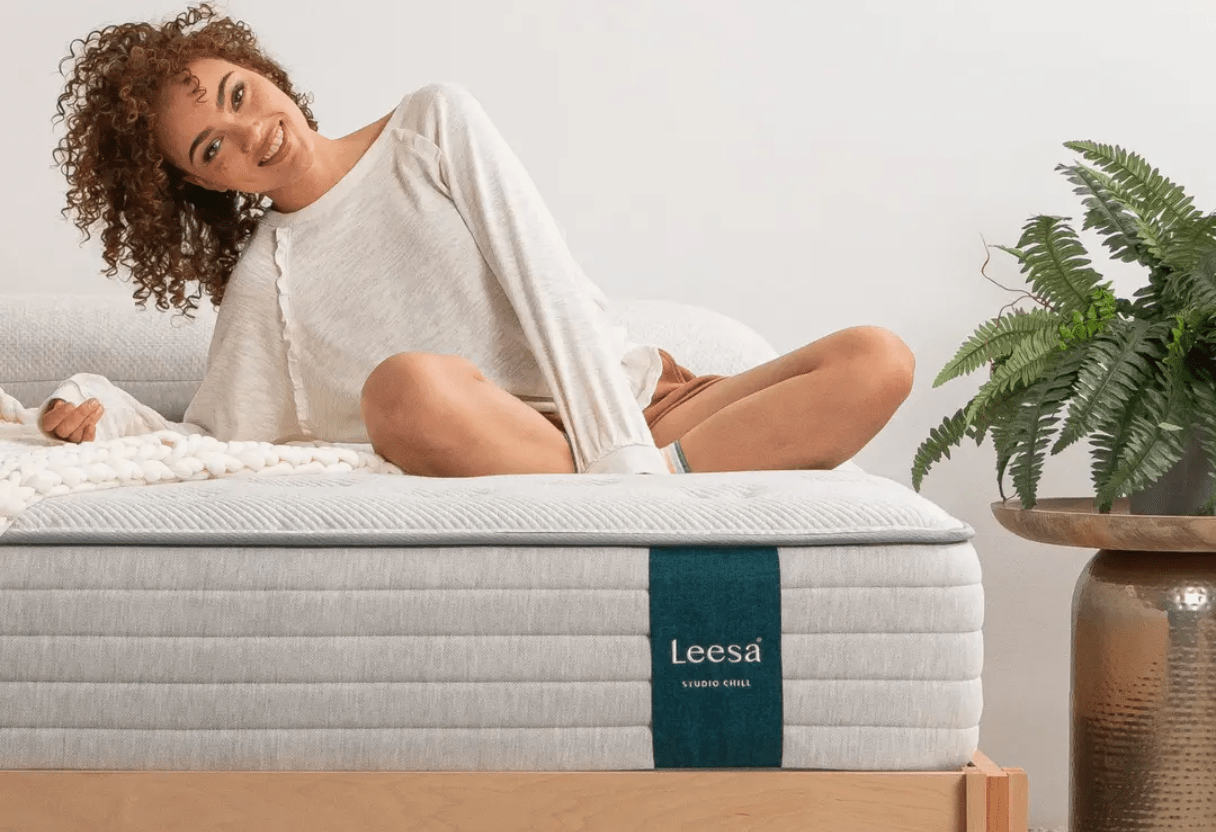
Frequently Asked Questions
Sleeping the right way can ease stress on your back and neck. Changing posture and using simple pain relief habits improves comfort through the night. Avoiding positions that strain the spine is important to keep pain from getting worse.

